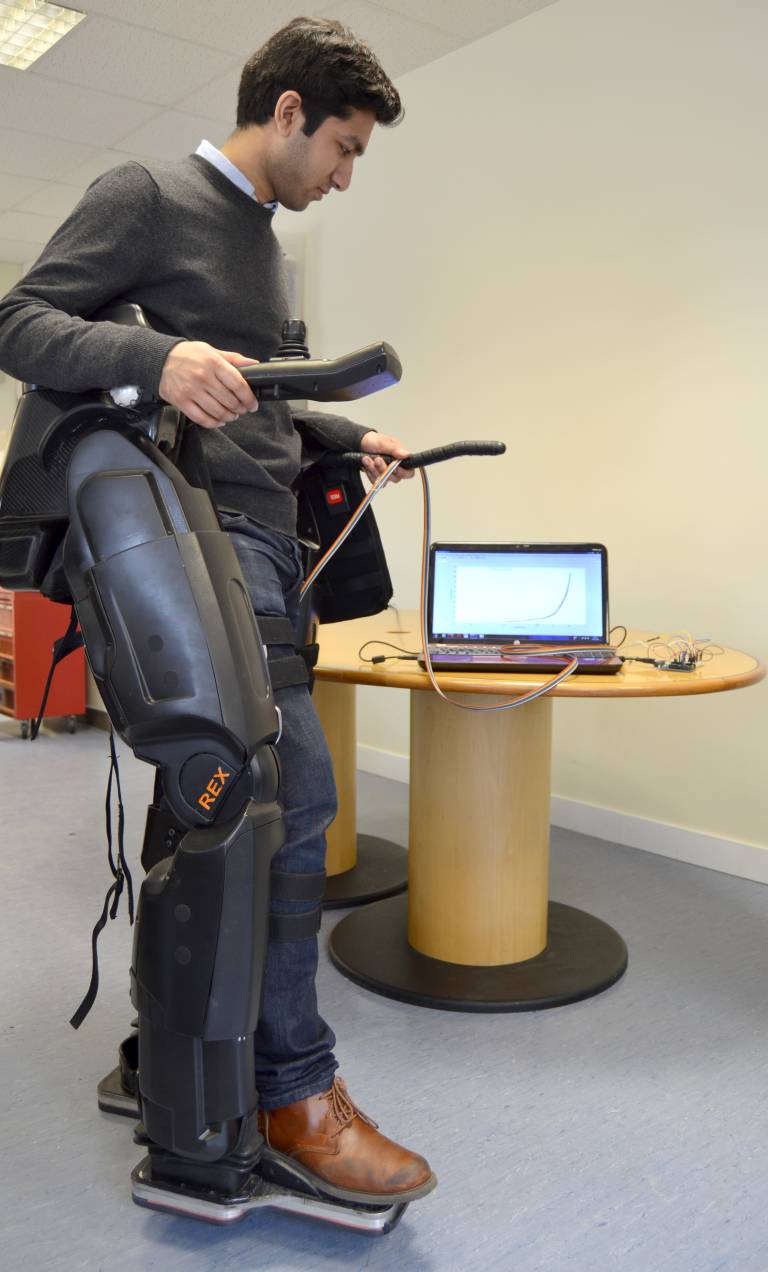Robotic Exoskeleton
Medical students have explored how we might gain an understanding of brain activity so it could potentially control a lower limb exoskeleton.

1 August 2016
This investigation was carried out by two medical students, Ashish Ratore (iBSc 2014-15, pictured, who won the John Scales Prize and the Faculty Dean's Prize for his project), and Matthew Willcox (summer internship, 2015). A third medical student, Alex Zervudachi, carried out a preliminary characterisation of brain activity that could eventually be used to control a lower limb exoskeleton. Matthew wrote about his experience.
I completed a period of research with Aspire CREATe as part of a UCL summer studentship investigating the interaction forces between healthy users and a lower limb exoskeleton.
Coming from a medical background and with little experience working with MatLab and similar software, I initially found my involvement in this research challenging. Through patience and persistence from myself and lab colleagues, I was able to become proficient in using them.
While I would not call myself an expert in coding, my experience at Aspire CREATe has certainly provided me with a degree of competence and specialist knowledge within this field of medicine.
This is becoming important as engineering expands into many fields of medicine, including (but not limited to) orthopaedics, gastroenterology, and ophthalmology. Aspire CREATe has been, and continues to be, at the forefront of much of this research.
As a future doctor, my engagement in this research group has provided me with an awareness of unconventional interventions that are likely to improve the lives of patients that may be under my care in the future.
This is reflective of the modern healthcare environment which is becoming increasingly multi and interdisciplinary. It follows that the development of new and transferable skills in fields such as medical engineering are becoming increasingly important.
My experiences at ASPIRE CREATe have provided me with a foundation of knowledge and understanding which I will be able to apply irrespective of my future speciality.
Matthew Wilcox
Resultant publications
Zervudachi, A., Sanchez, E., & Carlson, T. (2016). Preliminary EEG Characterisation of Intention to Stand and Walk for Exoskeleton Applications. 3rd International Conference on Neurorehabilitation (ICNR2016).
Wilcox, M., Rathore, A., Morgado Ramirez, D. Z., Loureiro, R., & Carlson, T. (2016). Muscular Activity and Physical Interaction Forces during Lower Limb Exoskeleton Use. Healthcare Technology Letters.
Rathore, A., Wilcox, M., Ramirez, D. Z. M., Loureiro, R., & Carlson, T. (2016). Quantifying the human-robot interaction forces between a lower limb exoskeleton and healthy users. Conference proceedings: Annual International Conference of the IEEE Engineering in Medicine and Biology Society. IEEE Engineering in Medicine and Biology Society. Annual Conference, 2016, 586-589. IEEE.
 Close
Close

